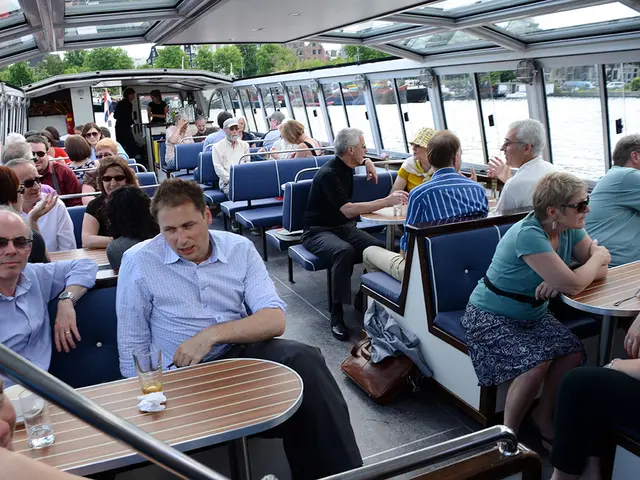Experience Eight Mesmerizing Medieval Towns in Croatia (Guaranteed Refund!)
Exploring Croatia's Medieval Charms Beyond the Beaches
Known for its captivating coastline, azure waters, and picturesque islands, Croatia proudly showcases a less-publicized facet: its well-preserved medieval cities and villages that appear to have remained untouched by time. These enchanting locales offer visitors an immersive journey through history.
For those seeking to delve into Croatia's medieval past, this guide provides an unmissable itinerary:
- Unseen Gems of Croatia: Ancient Sites to Discover
- Picturesque Spots: Culture and Nature in Harmony
- Savoring the Local Flavors at Traditional Croatian Restaurants
Dubrovnik, the Adriatic's Pearl
Located in the southeastern part of Croatia, near the borders of Montenegro and Bosnia, Dubrovnik is one of the country's most renowned medieval urban centers. Its popularity soared due to serving as a backdrop for the smash-hit TV series "Game of Thrones." Despite its fame, the city's charm endures. The pedestrian-only historic center is perfect for leisurely strolls, while its walkways along the ramparts offer a panoramic view of the city's red-roofed buildings, monumental structures, and the Adriatic Sea. The Fortress of St. Lawrence, towering 37 meters high atop a rock, is another must-see, known as the "Gibraltar of Dubrovnik." Its summertime transformations include hosting Shakespearean plays.
Motovun, the Enchanting Istrian Village
Driving for an hour from Pula leads one to the medieval village of Motovun, perched atop a hill offering a spectacular vista of Istria's valleys. Its white houses with salmon-hued rooftops, meandering around a double-encircled castle, present a Postcard-like charm. Making the climb to the top and taking in the breathtaking panorama from a terrace is a delightful and unforgettable encounter.
Motovun is also famous for its truffles. Gourmands and curious travelers alike will appreciate its local eateries. During the summer, Motovun Film Festival showcases open-air screenings under the starlit sky.
Hum, the World's Tiniest Medieval City
Considered the smallest medieval town in the world, Hum is distinguished by its stone buildings and narrow streets. Once a hub of Glagolitic writing—the ancient Slavic alphabet—the village retains inscriptions from that era on its structures. The visit may be quick, but the warmth and allure of this town make it worthwhile. Its idyllic setting, preserved architecture, and generously served local cuisine make it a haven for those seeking tranquility. Legend has it that this town was built from rocks left behind by giants.
Trogir, the Museum City Par Excellence
Inscribed on the UNESCO World Heritage List, Trogir is a city built on a small island brimming with history. Its winding streets are lined with Gothic, Romanesque, and Renaissance architecture, offering a compact concentration of the past. Among Trogir's notable treasures are the Cathedral of St. Lawrence and its bell tower, which afford an awe-inspiring view of the city. The Riva promenade is another popular spot, teeming with bars and restaurants by the sea.
Ston, the City of Old Walls
On the Pelješac peninsula lies the medieval village of Ston, renowned for its 5.5 km long walls, nicknamed the "little Chinese walls." Constructed in the 14th century, they were built to safeguard the Republic of Ragusa (formerly Dubrovnik). Nowadays, visitors flock to this location for hiking trails with a sweeping Adriatic sea view, active salt pans, or fresh seafood, specifically oysters.
Grožnjan, the Creative Heart of Istria
Grožnjan is a medieval village steeped in art and culture, boasting art galleries, artisan workshops, and a vibrant music scene, particularly jazz. Originally a Venetian fortress, it retains a captivating old-world charm with its irregular cobblestone streets and stone houses. This symphony of history and creativity makes Grožnjan a captivating destination.
Bale, the Authentic Medieval Quaintness
Hidden in the Istrian countryside, Bale offers a serene and genuine setting for visitors. Its charming stone houses with warm tones and narrow alleys instantly transport explorers to another era. The Bembo Castle, dating from the 15th century, stands proudly in the town center and serves as a testament to the region's rich history. Nearby, the enigmatic Romualdo cave, another medieval relic, once housed hermits in the Middle Ages.
Rijeka, a Vibrant Port City
Finally, one must visit Rijeka, situated in the Kvarner Bay. A bustling port city with a rich medieval heritage influenced by successive Croatian, Italian, and Austrian inhabitants, Rijeka boasts an important castellany and church on Trsat Hill, as well as the Modello Palace and the Ivan Zajc Theater.
Less famous than Dubrovnik and Trogir, Rijeka is an alluring cultural destination for travelers venturing off the beaten tourist paths.
- In the itinerary of ancient sites to discover in Croatia, travelers may find the tiny medieval city of Hum, where the streets are lined with stone buildings and inscriptions remaining from the era of Glagolitic writing, providing a glimpse into the past.
- For those seeking tranquility amidst Croatia's medieval charm, the picturesque village of Motovun, perched atop a hill, offers a breathtaking view of Istria's valleys and a delightful encounter on its terrace, along with an immersion into local culture through truffle-centered cuisine and the Motovun Film Festival during summer.





